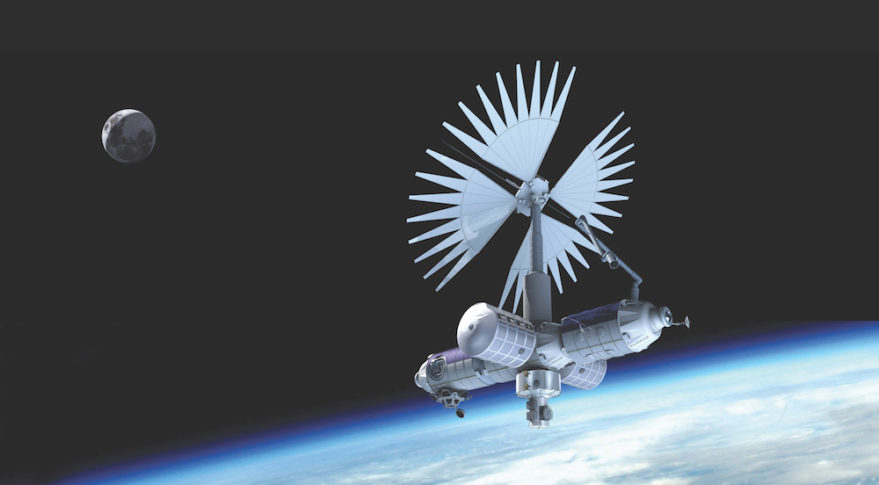Study Offers Pessimistic Outlook for Commercial Space Stations

WASHINGTON — As NASA formally requests proposals for studies on the commercialization of low Earth orbit, another study presented at a congressional hearing May 17 concludes commercial space stations are unlikely to be financially viable in the mid-2020s.
In testimony at a House Science Committee hearing on America's future in low Earth orbit, Bhavya Lal of the Institute for Defense Analysis' Science and Technology Policy Institute said a study performed by her organization found it unlikely that a commercial space station could generate a profit in 2025, the year NASA plans to end federal funding of the International Space Station.
The study looked at four different scenarios for a commercial station, with low and high costs and revenues. Only in one case, with high projected revenues and low operating costs, did the facility generate a profit. In a second case, with low costs and revenues, the facility had a small loss, but in the case of high costs the commercial station suffered large annual losses regardless of revenue. [In Pictures: Private Space Stations of the Future Imagined ]
"Overall, our analysis showed that it is unlikely that a commercial space station would be economically viable by 2025," Lal said.
Those outcomes, she said, came even with the use of "aggressive" assumptions such as transportation cost reductions of 50 to 75 percent from current levels. She said some applications for a commercial space station could experience faster growth than expected, generating increased revenue. However, some projected markets may turn out not to be lucrative.
The report found that the three most promising markets for a commercial space station were production of "exotic" optical fibers, satellite assembly and hosting "sovereign astronauts," or those from other national space agencies. The study, though, found wide ranges of potential revenues from those markets: from $7 to 359 million per year in the case of on-orbit satellite assembly.
That uncertainty in revenues, along with the pessimistic models, is unlikely to attract venture capitalist investors, Lal said. "Venture capitalists we spoke to indicated that projected revenue streams are too far in the future and too uncertain to warrant making significant investments today," she said.
Get the Space.com Newsletter
Breaking space news, the latest updates on rocket launches, skywatching events and more!
Lal offered several alternatives if a commercial space station isn't viable by 2025. The ISS itself could be extended to at least 2028, albeit at a cost to NASA of $3–4 billion a year that could take money away from exploration initiatives. Some of all of the ISS could be privatized, she said, with a company operating the station for NASA at a potential, but not assured, discount over the current model.
A third option Lal offered could be for NASA to subsidize a commercial space station in exchange for use of it. A payment of $2 billion a year should be enough to cover the costs of operating a commercial station, she said, even if there is no other revenue.
The testimony came the same day that NASA formally released a research announcement for studies of LEO commercialization. In a statement, NASA said it was interested in "industry concepts detailing business plans and viability for habitable platforms, whether using the International Space Station or a separate free-flying structure, that would enable a space economy in low Earth orbit in which NASA is one of many customers."
Proposals are due in 30 days, and NASA anticipates making multiple awards of up to $1 million each in July for studies to be completed by the end of the calendar year.
Bill Gerstenmaier, NASA associate administrator for human exploration and operations, said at the hearing that the studies will help NASA provide more details about its ISS transition plan, including maintaining a post-ISS presence of some kind in LEO.
"We see a need for a continued activity in low Earth orbit for an extended period of time," he said. Asked by committee chairman Rep. Lamar Smith (R-Texas) how much that would cost, he said the studies will help determine that.
"We need to take serious steps forward," he said. "We're going to ask commercial companies for studies to come back, show us their business plan, show us their market analysis, show us what we think the cost would be for operations in low Earth orbit for NASA's defined needs."
Unlike a May 16 hearing by the Senate's space subcommittee, where senators criticized plans to end NASA funding of the ISS in 2025, House members appeared more willing to reserve judgement until NASA provides more details, in part through the upcoming studies.
"This is a bold proposal, and one that raises a lot of questions," Rep. Eddie Bernice Johnson (D-Texas), ranking member of the science committee, said in her opening statement of NASA's ISS transition plans. "As members of the science committee, we need to roll up our sleeves, ask the right questions and focus on the core issues needing our attention."
This story was provided by SpaceNews, dedicated to covering all aspects of the space industry.
Join our Space Forums to keep talking space on the latest missions, night sky and more! And if you have a news tip, correction or comment, let us know at: community@space.com.

Jeff Foust is a Senior Staff Writer at SpaceNews, a space industry news magazine and website, where he writes about space policy, commercial spaceflight and other aerospace industry topics. Jeff has a Ph.D. in planetary sciences from the Massachusetts Institute of Technology and earned a bachelor's degree in geophysics and planetary science from the California Institute of Technology. You can see Jeff's latest projects by following him on Twitter.










